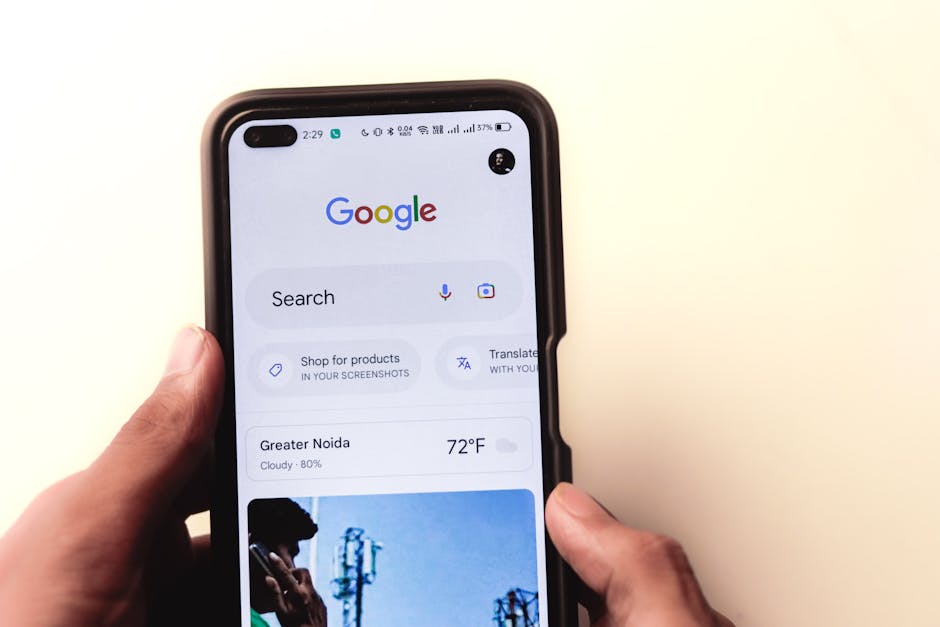User-Friendly Web Design Tips
Table of Content.
- Understanding User Experience
- Simplifying Navigation
- Mobile Responsiveness
- Consistent Branding
- Optimizing Load Speed
- Clear Call-to-Actions
- Accessible Design Practices
Understanding User Experience
User experience, often called UX, is all about how a person feels when using a website. Imagine browsing a site that loads slowly or has confusing menus. It's frustrating, right? An effective website design aims to make this experience smooth and enjoyable.
Think of a friendly store where you can easily find what you're looking for. A user-friendly web design does the same online. It guides visitors through content, ensuring they find what they need without hassle.
Responsive website design is a big part of UX. This means the site looks good on any device, whether it's a phone or a computer. For website development for entrepreneurs, focusing on UX can make visitors stay longer and even become customers.
Consider using simple navigation, clear buttons, and readable text. These elements help create a positive experience, turning casual visitors into loyal users. A great UX ensures people feel good about your website, which can lead to success in website design for marketing.
Simplifying Navigation
Good navigation is crucial for user-friendly web design. When a visitor lands on a website, they should find what they need quickly. Clear menus can make this possible. For example, place the menu at the top of the page. Use simple words for menu items like "Home," "About," or "Contact."
Think about using a drop-down menu for extra options. This way, users can explore without clutter. Prioritize the most important items first. Websites like online stores often use categories like "Men," "Women," or "Sale" to guide users.
Icons can help too. A magnifying glass icon is great for search functions. Remember, the goal is to make the user's journey as easy as pie. A well-organized navigation structure can make all the difference.
Mobile Responsiveness
When we talk about mobile responsiveness, we mean how well a website looks and works on mobile devices. With more people using smartphones and tablets to surf the web, it's crucial for websites to be mobile-friendly. A user-friendly web design must adapt to different screen sizes. This means that no matter if someone is using a phone or a computer, the site should still be easy to use and navigate.
To make a website mobile responsive, designers use a technique called responsive design. This technique involves using flexible grids and layouts. Think of it like this: if you have a rubber band, it stretches and shrinks but maintains its shape. A responsive design does something similar with a website's layout. It adjusts based on the size of the screen. So, whether you're checking a site on a tiny phone or a large tablet, everything should still fit and look good.
Images and text are also important in responsive design. They need to resize or rearrange themselves to fit screens properly. For instance, a large image might look great on a desktop but could be too big on a phone. With responsive design, that image would automatically shrink to fit the smaller screen.
Navigation is another key area. On a desktop, you might see a full menu at the top of the screen. But on a mobile device, that menu could change to a small icon, often called a "hamburger menu," which expands when you tap it. This saves space and keeps the design clean and simple.
Testing is vital for mobile responsiveness. Designers often use tools to see how their website looks on different devices. This way, they can spot any issues and fix them quickly. If a site isn't responsive, users might leave quickly, which can hurt a business's online presence.
In the end, a mobile responsive website ensures a smooth and enjoyable experience for users, no matter what device they are using.
Consistent Branding
Creating a user-friendly web design goes beyond just making it easy to navigate. A crucial part of this is consistent branding. But what does that mean? Well, it's about having the same look and feel across all pages and platforms. This helps users recognize and trust your brand. Imagine your website as a store. If the front door looks different every time, visitors might hesitate to enter.
Start with your logo. It should be clear and visible on every page. Use the same colors and fonts throughout your site. If your homepage uses bright blue and white, keep those colors in other sections too. This creates a unified experience. Think of big companies like Apple. Their sleek design is consistent everywhere, from their website to their packaging.
Your images should also align with your brand's style. If your brand is playful, use colorful and fun images. If it's professional, stick to clean and polished photos. Language matters, too. If your brand voice is friendly, keep the tone light and approachable throughout the site.
Consider how these elements work together. Consistency in branding helps users feel at home. They instinctively know they're in the right place. This trust can lead to more engagement and even sales.
Optimizing Load Speed
When it comes to user-friendly web design, load speed plays a crucial role. Imagine landing on a website, and it takes forever to load. Frustrating, right? That's why we need to ensure our websites load quickly. Let's break down some ways to optimize load speed.
First, consider image sizes. Large images can slow down a website considerably. By resizing images or using formats like JPEG or PNG, you can reduce the load time. There are tools online that can help compress images without losing quality.
Next up is minimizing HTTP requests. Every time someone visits a webpage, their browser sends requests to the server for files like images, scripts, and stylesheets. The more requests, the slower the page. Combining files, like CSS and JavaScript, can reduce these requests.
Another important factor is using browser caching. When a user visits a site, their browser can store some data. This way, when they revisit, the site loads faster because it doesn't have to reload everything. Setting expiration dates for cache storage can manage how long data stays stored.
Content delivery networks (CDNs) can also be a game-changer. A CDN stores copies of your website on servers around the world. When someone visits your site, the server closest to them delivers the content. This reduces load time significantly.
Lastly, consider reducing server response time. Choose a reliable hosting provider. A slow server can hinder even the best-optimized websites. Regularly checking server performance and upgrading when necessary can make a big difference.
By focusing on these aspects, you can ensure a fast and user-friendly experience for your visitors. A speedy site not only keeps users happy but can also improve your search engine ranking. Happy visitors and good SEO—what's not to love?
Clear Call-to-Actions
Creating clear call-to-actions (CTAs) is crucial for any user-friendly web design. Think of CTAs as friendly guides that help visitors know what to do next on your website. Whether it's signing up for a newsletter, buying a product, or contacting you, a good CTA makes the user's path straightforward.
To begin with, language plays a vital role. Use simple and action-oriented words like "Buy Now," "Learn More," or "Get Started." These phrases are direct and tell users exactly what will happen when they click. Avoid vague terms that might confuse the visitor.
Next, consider the design of your CTAs. They should stand out on the page, so use contrasting colors to draw attention. If your website's background is blue, a bright orange or red button can be eye-catching. Size matters too; make sure the button is large enough to click easily, even on mobile devices.
Placement is another key factor. Ideally, CTAs should be above the fold, meaning users don't have to scroll down to see them. If a user has to search for the CTA, they might lose interest. You can also place CTAs at the end of important sections where users are ready to take action.
Finally, test different versions of your CTAs. A/B testing, where you compare two versions to see which performs better, can provide insights. You might find changing the color or text slightly improves click rates.
Effective CTAs guide users smoothly, making their journey on your site pleasant and purposeful.
Accessible Design Practices
Creating a user-friendly web design means making sure everyone can use your website, including people with disabilities. Accessible design practices are key to achieving this. Let's look at some ways you can make your site more accessible.
First, consider the color contrast. People with poor eyesight or color blindness need good contrast to read text easily. Ensure the text color stands out against the background. For example, black text on a white background is easy to read. Avoid light grey text on a white background, which can be hard to see.
Next, think about text size and readability. Some users may have difficulty reading small text. Use a font size that is large enough for most users. Many websites use a base font size of 16 pixels. This size is easy to read on most devices. Also, choosing a simple and clear font like Arial or Verdana helps improve readability.
Don't forget about keyboard navigation. Some users can't use a mouse and rely on a keyboard to navigate. Make sure all features and links on your site can be accessed with the keyboard. Test your site by using the "Tab" key to move through links and buttons. If you can't reach something, consider changes to make navigation smoother.
Use descriptive text for images. People with visual impairments use screen readers to hear descriptions of images. Adding "alt text" to your images helps screen readers describe them. For example, if you have a picture of a cat, your alt text could say, "A fluffy orange cat lying on a sunny windowsill."
Lastly, ensure your website's structure is simple and logical. Use headings to break up content into sections. Headings help screen readers understand the layout and guide users through the page. A clear structure benefits everyone, making your site easier to navigate.
These practices not only help users with disabilities but improve the experience for all visitors. By focusing on accessibility, your website becomes more welcoming and user-friendly.
FAQ
What is user experience (UX) and why is it important for web design?
User experience (UX) refers to the overall experience a visitor has when interacting with a website. It is crucial because a positive UX can lead to higher engagement, improved satisfaction, and increased conversions, while a negative UX can drive users away.
How can I simplify navigation on my website?
To simplify navigation, use clear, concise labels for menu items, limit the number of options to avoid overwhelming users, and ensure that the navigation bar is easily accessible and consistent across all pages.
Why is mobile responsiveness important for my website?
Mobile responsiveness ensures that your website displays correctly on devices of all sizes, from desktops to smartphones. This is important because it enhances user experience and helps retain visitors who access your site via mobile devices.
How does consistent branding enhance user trust on my website?
Consistent branding, including uniform colors, logos, and typography, helps create a cohesive and professional appearance. It builds user trust and recognition by reinforcing your brand identity across all pages of your website.
What are some tips for optimizing my website's load speed?
To optimize load speed, compress images, minimize code, leverage browser caching, and use a reliable hosting provider. Fast load times improve user retention and satisfaction by reducing wait times.
How can I create effective call-to-action (CTA) buttons?
Design effective CTAs by using action-oriented language, contrasting colors to make them stand out, and placing them strategically where users are most likely to take action, such as near the end of a product description or an article.
What are accessible design practices and why are they important?
Accessible design practices ensure that your website is usable by everyone, including people with disabilities. Implementing features like alt text for images, keyboard navigation, and screen reader compatibility ensures inclusivity and broadens your audience reach.



